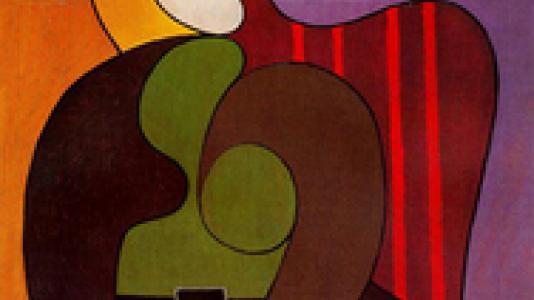
A collaboration between the Art Institute of Chicago and Argonne National Laboratory has produced an answer to a topic that has vexed the art world for decades: Pablo Picasso was the first artist to use common house paint in his work and spread that practice widely. It also has drawn the two worlds of cultural heritage experts and scientists together with the potential to rewrite art history.
Starting in the summer of 2010 and continuing through the summer of 2011, Volker Rose (of Argonne’s Advanced Photon Source and the Center for Nanoscale Materials’ X-Ray Microscopy Group) and Art Institute conservation scientist Francesca Casadio used the CNM/APS Hard X-Ray Nanoprobe beamline to analyze several Picasso paint samples and several others made by an obscure French paint company, all about as small as a grain of salt. Their analysis of the samples, removed from Picasso’s pieces by using micro-manipulating tools on errant drips, was critical in finding that Picasso used the first commercial house paint made by the Ripolin company, as early as 1912.
Picasso’s affinity for house paint is said to have sparked an upheaval in the use of traditional art materials. The theory is that Picasso used the enamels because he could produce paintings faster than by using conventional tube paint. The scanning probe X-ray fluorescence capability of the Hard X-Ray Nanoprobe was used to uncover this finding.
On the arts side, the use of extremely intense X-rays is revolutionizing the work of cultural historians, according to Casadio, who adds that more certain and specific knowledge of an artwork’s makeup gleaned from the Nanoprobe can improve greatly its treatment, preservation and restoration.
(excerpted from the Chicago Tribune, Wednesday, October 20, 2012)
F. Casadio and V. Rose, “High-resolution fluorescence mapping of impurities in historical zinc oxide pigments: hard X-ray nanoprobe applications to the paints of Pablo Picasso,” Appl. Phys. A, 111, 1-8 (2013) (online)
In the News
- A French print journal identified this work as one of 5 major breakthroughs in art studies by modern techniques in 2015: Science & Vie, No. 1174, July 2015, pg. 106
- Argonne Press Release
- Art Institute blog
- CNBC
- Huffington Post
- New York Times
- Phys.org
- Physics Buzz
- Science Blog
- Symmetry
- UPI Science News
- Yahoo! News
October 2012 original; modified June 29, 2015